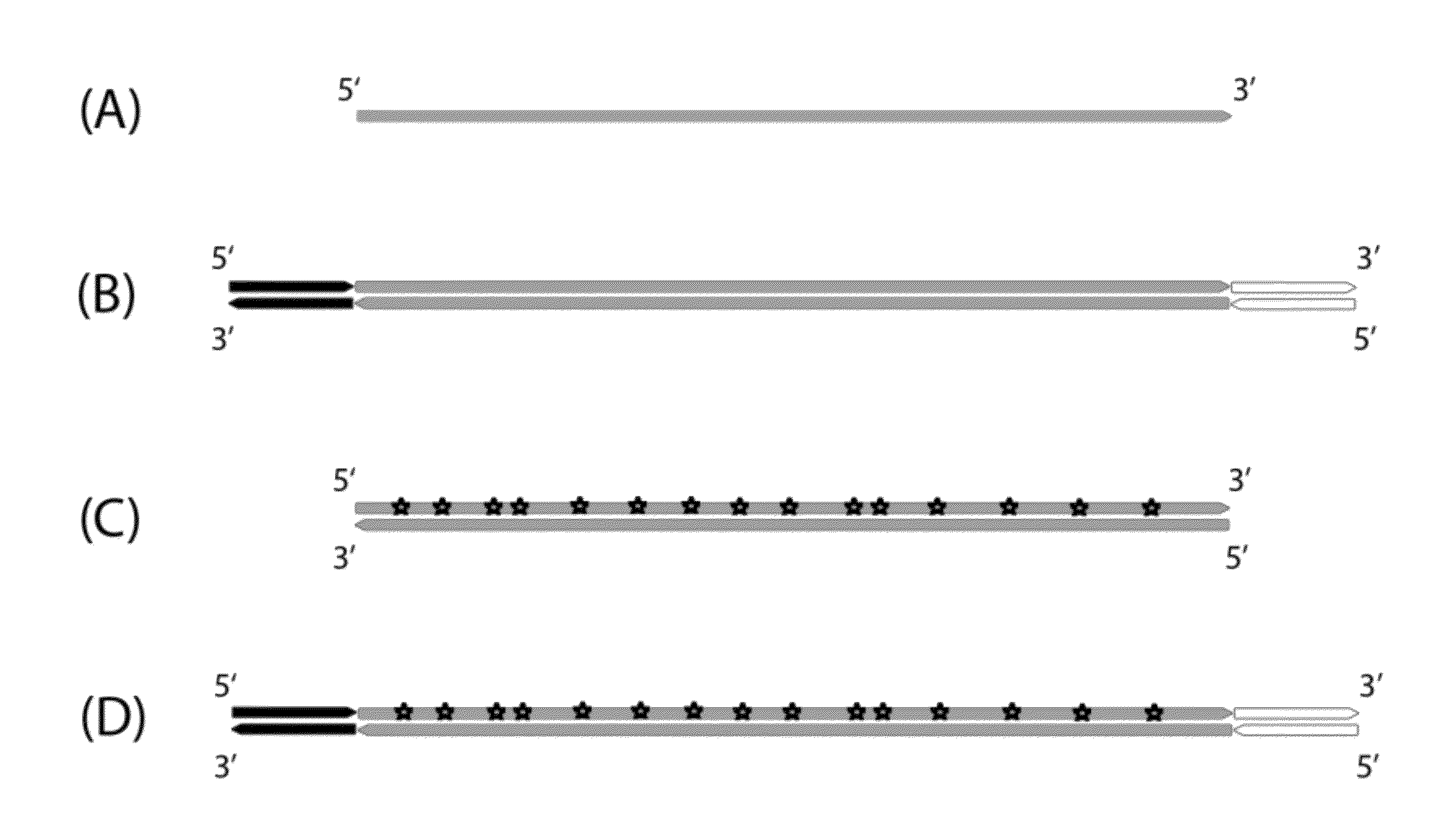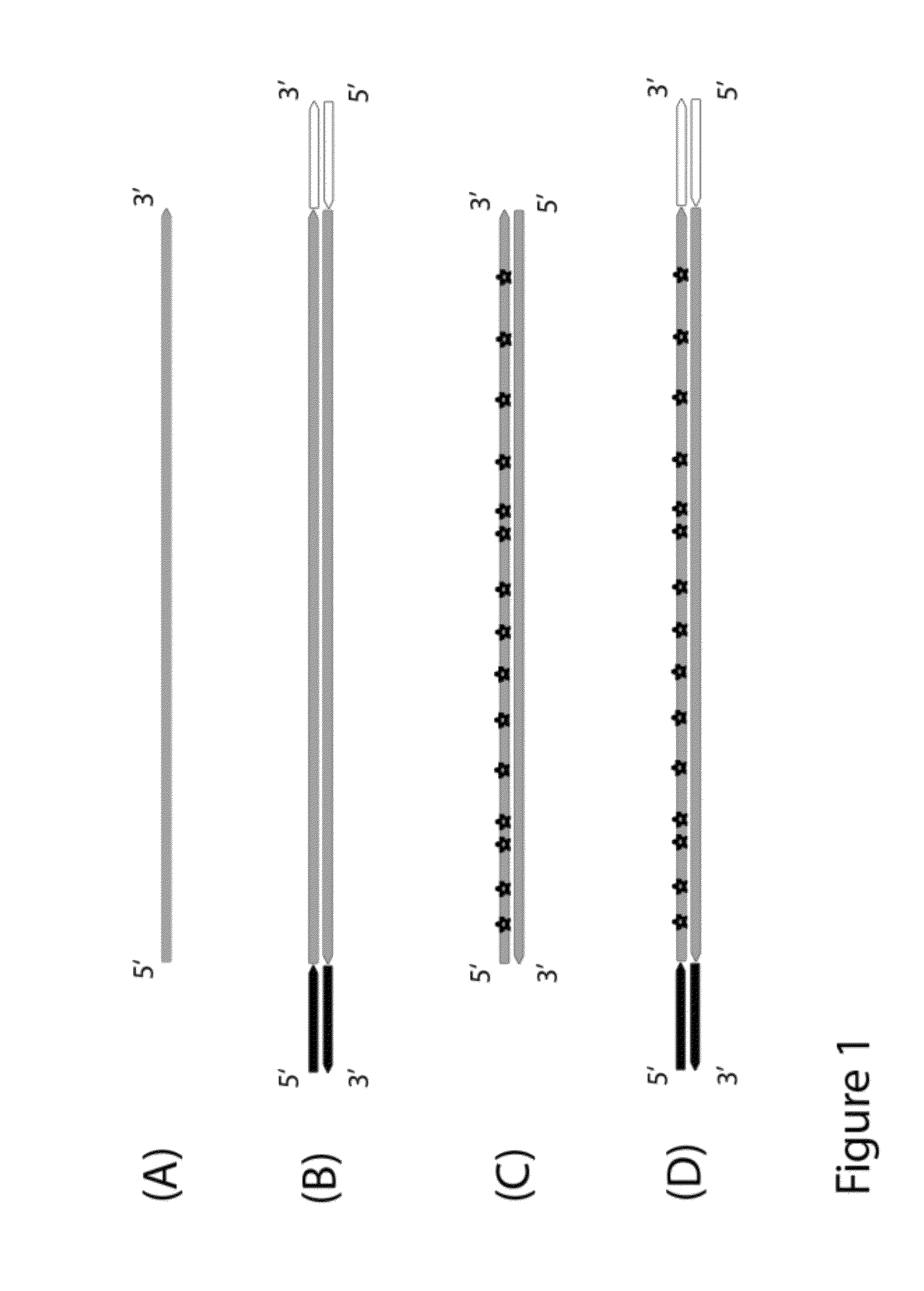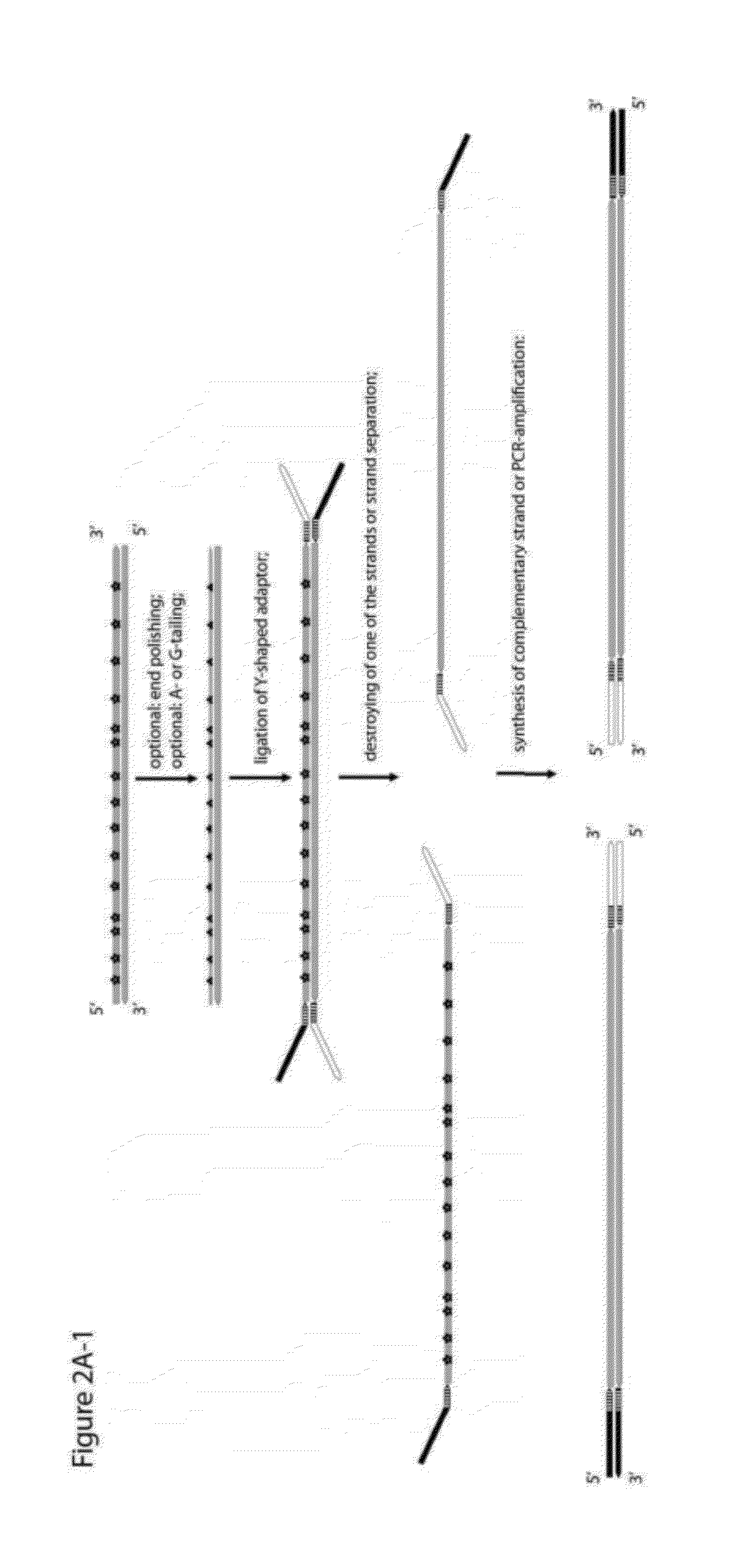Method for differentiation of polynucleotide strands
a polynucleotide and strand technology, applied in the field of polynucleotide strand differentiation, can solve the problems of strand separation where one of the strands is located, the end of the clone preserving directional information, and the efficiency of such operations is normally low
- Summary
- Abstract
- Description
- Claims
- Application Information
AI Technical Summary
Benefits of technology
Problems solved by technology
Method used
Image
Examples
embodiment 9
[0213]If the sequence of the original RNA is not known it may be desirable to perform sequencing. Thus such a step is added to the step order of embodiment 1:[0214]1) Providing at least one single-stranded RNA molecule;[0215]2) Adding sufficient amounts of the four dNTPs dATP, dCTP, dGTP and dTTP or corresponding analogues thereof;[0216]3) Generating a first cDNA strand;[0217]4) Replacing at least one dNTP with at least one corresponding modified dNTP;[0218]5) Performing second-strand synthesis on the first cDNA strand;[0219]6) Ligating polarity-specific adaptors to one or both ends of the cDNA double strand;[0220]7) Specifically modifying or removing the second cDNA strand containing the at least one modified dNTP; and[0221]8) Optionally, amplifying the at least one remaining intact cDNA strand by performing PCR.[0222]9) Sequencing the resulting copies of the at least one intact cDNA strand.
embodiment 10
[0223]Consequently, it is also possible to include a sequencing step if the first-stranded included the at least one modified dNTP and the intact second-strand cDNA is amplified, as in embodiment 2:[0224]1) Providing at least one single-stranded RNA molecule;[0225]2) Adding sufficient amounts of the four dNTPs dATP, dCTP, dGTP and dTTP or corresponding analogues thereof, wherein at least one of the four dNTPs is a modified dNTP;[0226]3) Generating a first cDNA strand;[0227]4) Replacing the at least one modified dNTP with the corresponding dNTPs or analogues of the corresponding dNTPs;[0228]5) Performing second-strand synthesis on the first cDNA strand;[0229]6) Ligating polarity-specific adaptors to one or both ends of the cDNA double strand;[0230]7) Specifically modifying or removing the first cDNA strand containing the at least one modified dNTP; and[0231]8) Optionally, amplifying the at least one remaining intact cDNA strand by performing PCR.[0232]9) Sequencing the resulting copi...
embodiment 11
[0233]After sequencing it may be desirable to determine the polarity of the resulting sequence(s). This may serve for several analytic or diagnostic purposes (see below) or for aligning RNA transcripts to gene sequences known from DNA sequencing projects. If the remaining intact first strand cDNA was sequenced the order of the steps of the inventive method read as follows:[0234]1) Providing at least one single-stranded RNA molecule;[0235]2) Adding sufficient amounts of the four dNTPs dATP, dCTP, dGTP and dTTP or corresponding analogues thereof;[0236]3) Generating a first cDNA strand;[0237]4) Replacing at least one dNTP with at least one corresponding modified dNTP;[0238]5) Performing second-strand synthesis on the first cDNA strand;[0239]6) Ligating polarity-specific adaptors to one or both ends of the cDNA double strand;[0240]7) Specifically modifying or removing the second cDNA strand containing the at least one modified dNTP; and[0241]8) Optionally, amplifying the at least one re...
PUM
| Property | Measurement | Unit |
|---|---|---|
| temperatures | aaaaa | aaaaa |
| temperature | aaaaa | aaaaa |
| volume | aaaaa | aaaaa |
Abstract
Description
Claims
Application Information
 Login to View More
Login to View More - R&D
- Intellectual Property
- Life Sciences
- Materials
- Tech Scout
- Unparalleled Data Quality
- Higher Quality Content
- 60% Fewer Hallucinations
Browse by: Latest US Patents, China's latest patents, Technical Efficacy Thesaurus, Application Domain, Technology Topic, Popular Technical Reports.
© 2025 PatSnap. All rights reserved.Legal|Privacy policy|Modern Slavery Act Transparency Statement|Sitemap|About US| Contact US: help@patsnap.com



